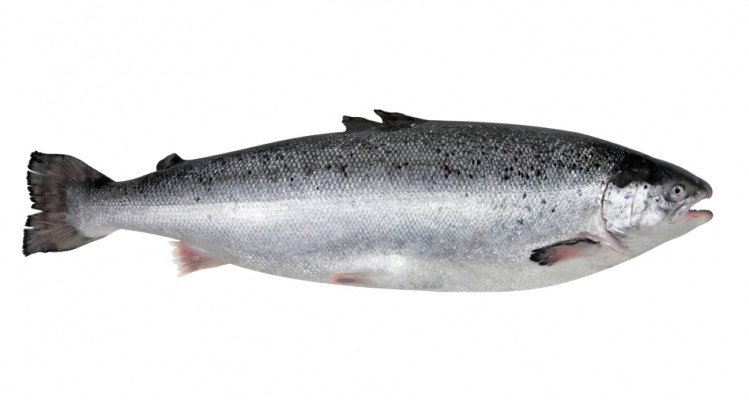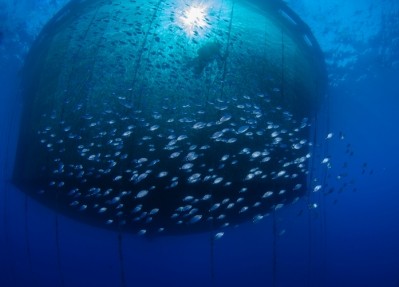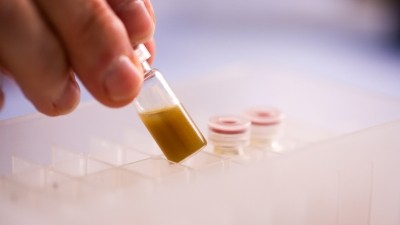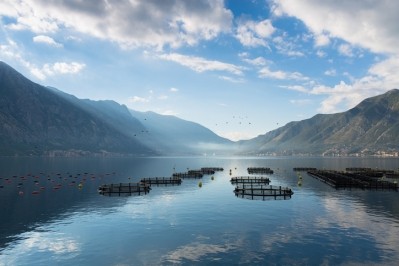Dispatches from One: the Alltech Ideas Conference
Artificial salmon gut developed to ease cost, time in feed trials

We spoke to Martin Llewellyn, senior lecturer, University of Glasgow, and Raminta Kazlauskaite, graduate student and researcher, University of Glasgow, about their work developing the salmon gut simulator during One: the Alltech Ideas Conference in Lexington, Kentucky last month.
One of the goals of their project is to launch an analysis business using the system to provide information to companies working on feed or in-feed elements for salmon diets.
“One of the ways we thought we might understand the community of microbes living in the gut it was to try and replicate it. We realized it would be potentially a useful application for industry to have an artificial salmon gut,” said Llewellyn.
The system focuses on salmon in the grow-out phase or when they would be living in sea cages.
The alternate gut, the development of which was funded initially by the Scottish Aquaculture Innovation Center and industry players, could help reduce the cost of feeding trials looking at the use or development of prebiotics and probiotics, for example, he said.
Digestibility data
Additionally, the team is now looking to add a way to run feed or ingredient digestibility trials using the system, he said.
“We’re also now developing it to do digestibility,” he said. “This is what a lot of people want."
The system already has the microbial communities and internal conditions needed for digestibility work, said Llewellyn.
“It is essentially simulating the intestinal environment, and so, once we’ve stripped out the small molecules, we should be able to estimate the impact of different feeds in terms of the digestibility,” he added.
The concept
SalmoSim's development began with the establishment of the relevant bacterial communities, and determining where in the intestinal tract they live, said Kazlauskaite.
“Then we measured the physiochemical conditions in them – we measured temperature, pH, dissolved oxygen – we wanted to see what conditions were inside in order to replicate them,” she added.
At the outset, the team was looking for a better understanding of the microbial ecology of salmon, to see if it had a bearing on the energetic phenotype of the fish, said Llewellyn.
“Salmon in the wild have about a three-fold variation in their standard metabolic rate – how fast their metabolic clock ticks over – within the same population.
“Some fish have high metabolic rate, high nutritional command they’re dominant, but when winter comes they’ve got to somehow maintain that demand and they’re not very good at surviving through the hard times,” he said. “Other fish, [with a] slower metabolic rate can afford to get by on less food, they can handle a period of anorexia more easily – so what we’re interested in doing was understand what the microbial contribution to those phenotypic traits was.”
The group is now in the process of validating responses using data from a feeding trial that involved a fishmeal-based diet and a fishmeal free one.
“We analyze what is happening to these microbial communities and how they change once you switch feed,” Kazlauskaite said. “We fed the bioreactors for a certain time on a fishmeal diet and then changed to a fishmeal zero diet; then we checked if the trends we see in real salmon are similar to what we see in SalmoSim.”
Initial results are promising, but the final analysis has not been completed, said Llewellyn.
Lowering costs of feed trials
An area of primary interest, though, is in helping reduce the cost of feeding trials, he said.
Feed and research trials with fish using a sea cage can cost about £150,000 (US$190,123) and face delays in terms of testing site availability, he said.
“People have to understand the incredible costs in feed trials in salmon, and I think this is why an artificial gut system is essentially a no-brainer.”
“There are only about 10 testing sites across Europe, and there are 3,000 salmon farms,” he said. “There’s just a queue … and no one’s going to buy your product if it’s not had a sea trial.”
The SalmoSim is intended to provide a way to prescreen ingredients, said Llewellyn.
“Say you had 30 different products you wanted to try – we could triage them down to four, the four best, and then you could take those – the idea is to try and save money,” he added.














